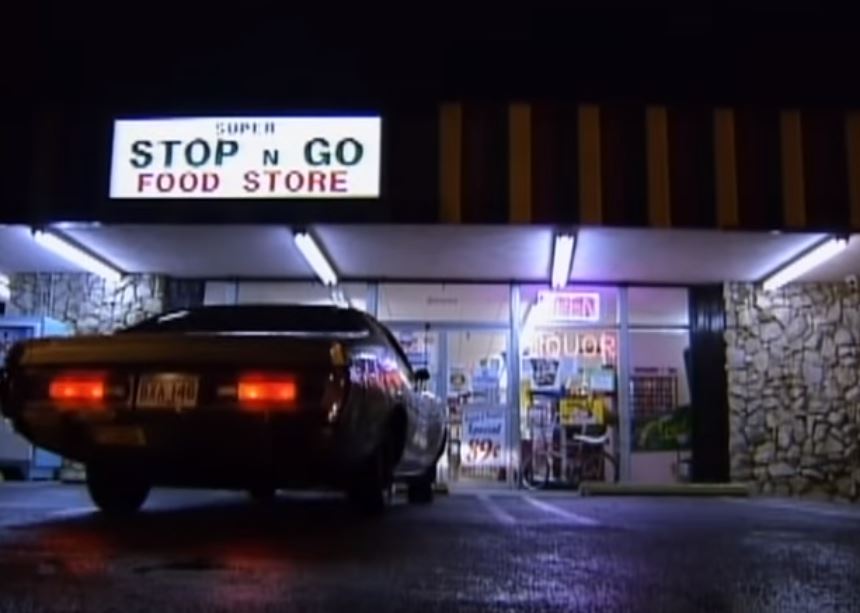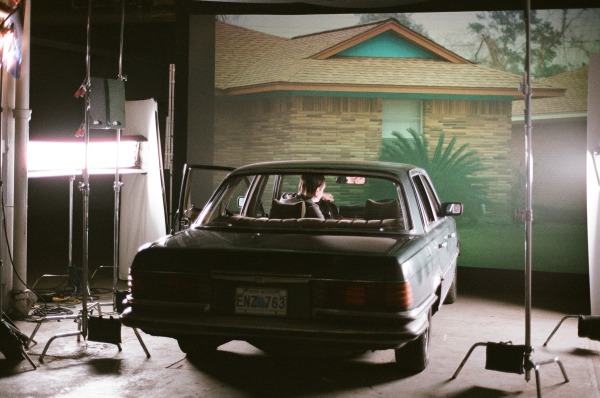The More you Change the More you Feel: Music, Memory, and the Infinite Affect(ion)
IASPM CA
By Brian Fauteux
“I used to be a little boy.”
In September of last year I turned thirty-five. Two days after my birthday, I saw the Smashing Pumpkins on their (partial) reunion tour of three-plus-hour sets of the hits, the favourites, the classics. I had low expectations heading into the show, having largely ignored the band for nearly two decades; my disinterest due to Billy Corgan’s insufferable public persona, which often eclipsed both the band’s ongoing output as well as the songs that were close to me during major formative years in the 1990s. But as Corgan took the stage to perform “Disarm” on his own, up against a towering screen that displayed a selection of his childhood photos, I was overcome with emotion and nostalgia beyond that which I’d experienced at a concert at any time prior. The juxtaposition of young and old, flesh and image, was poignant as I had been thinking a lot about age and change in the weeks leading up to my birthday.
Mellon Collie and the Infinite Sadness (1995) and Siamese Dream (1993) were absolutely influential on the years during which I first found autonomy and identity with the help of music. Over the years, my awareness of how important these albums were to me had waned but the live show brought it all back. As the band played through many songs off of these two albums, I was drawn not only to my own adolescence but to reflect on a first year as a parent, one unfolding through a young face, body, and personality that transforms notably each day (transformations I watched as a young Corgan aged on screen). What challenges and changes might my child face and what songs will be there to offer support? The Smashing Pumpkins had my full attention and for a few wonderful hours I moved between the past, present, and future in ways that only music seems to effectively facilitate.
“With the headlights pointed at the dawn
We were sure we’d never see an end to it all.”
Years ago, I found it strange and misguided that Corgan placed blame on “the Britneys of the world” for the Pumpkins breaking up (and, sure, I still do). His protest would be one of rockism’s dying breaths as the turn of century brought a turn to poptimism. Still, another take might highlight the indispensability of youth when it comes to the sort of mass appeal and success that the Pumpkins enjoyed in the 90s. Perhaps the band was aging out of the ever sought after youth demographic of the culture industry’s desire. If music is standardized and routinized for easy consumption does it also have an expiry date?
In 2011 Corgan said: “The Pumpkins won’t be a nostalgia act, we refuse to be. That would be the true death of the Smashing Pumpkins.” But here we are. When one is out of the spotlight, is there pleasure in giving in to nostalgia, in giving the fans those cherished songs that they know and love? Is a nostalgia tour more complicated than simply assuming the band is cashing in on their old catalogue rather than working to introduce and perform new songs?
The prevalence of youth on the association of music and memory is all too common but certainly understandable. As Tia DeNora writes, music reminds us of who we were at a certain time and helps “to recapture the aesthetic agency [we] possessed...Reliving experience through music is also (re)constituting past experience; it is making manifest within memory what may have been latent or even absent the first time” (2006, 143). Andy Bennett questions the assumption that pop music is for the young, claiming, “Where once rigid social divisions were drawn between adolescence, early adulthood, middle age, and later life, in late modernity such divisions are much less evident as the lifestyles of people at each of these stages of life become more similar.” He adds, “A further problem with popular representations of aging music audiences is the tendency to equate middle-aged music fandom with a nostalgic harking back to the time of one’s youth” (2013, 14).
In 1979 Billy Corgan was twelve years old, an age cemented in the band’s highest charting single, “1979.” When I was twelve, I unwrapped my first double CD at Christmas: Mellon Collie and the Infinite Sadness. “1979” is an exceptional song on its own but one made even better by its video, a text that introduced me to the idea of nostalgia before I was old enough to experience it myself. Relating the everyday lives of suburban teenagers passing the time, the camera grants us a variety of perspectives: close quarters at a crowded house party, a bird’s eye view of the Dodge Charger that is essential for navigating this particular time and place, and an uncharacteristic smile on a close up of Corgan’s face. (Spike Jonze nearly directed the video but would later direct a very similar one steeped in suburb-centric-nostalgia with Arcade Fire’s “The Suburbs,” right down to band members playing as cops. Only with “The Suburbs,” we move from the joyful aimlessness of “1979” to a dystopian police state).
The video for “1979” taught me that music would accompany memorable moments, both good and bad, and that it would be a means for reliving the past. On the cusp of becoming a teenager, I felt the need to make the sort of memories that would be worthy of such a song.
“Time is never time at all.”
In a lot of mid-90s alternative rock I found angst and apathy but in the music of the Smashing Pumpkins I found escape. The video for “Tonight, Tonight” was a surreal dreamscape within which one could curl up and imagine new worlds yet to come. I felt less like answering the call to drop out (one posed by numerous grunge songs) but ready to opt in to something new, something that wasn’t already evident.
Music doesn’t only accompany memories and enable us to to experience the past. It can soundtrack ideas about the type of reality one might wish to inhabit. As much as I have songs and albums that facilitate reflection, there are those I cherish for accompanying moments of becoming. Such songs can guide and advise affective moments and movements in our lives. Beyond finding value in the familiar there is value in feeling of something outside of the familiar. There is an assumption that we tend to rely on our already established tastes as we age out of the culture industry’s most coveted youth demographic. Take, for example, the claim that people stop listening to new music at the age of thirty-three (one based on streaming music data and one arguably flawed). But is it possible that the pursuit of new goals, dreams, and aspirations, of new realities, welcomes new songs and new affinities for them? Perhaps it's not so much about the fact that some people give up on listening to new music but more about conceding to one version of reality, however comfortable it might seem.
Brian Fauteux is Assistant Professor in Popular Music and Media Studies at the University of Alberta.
Twitter: @brianfauteux
Web: brianfauteux.com



